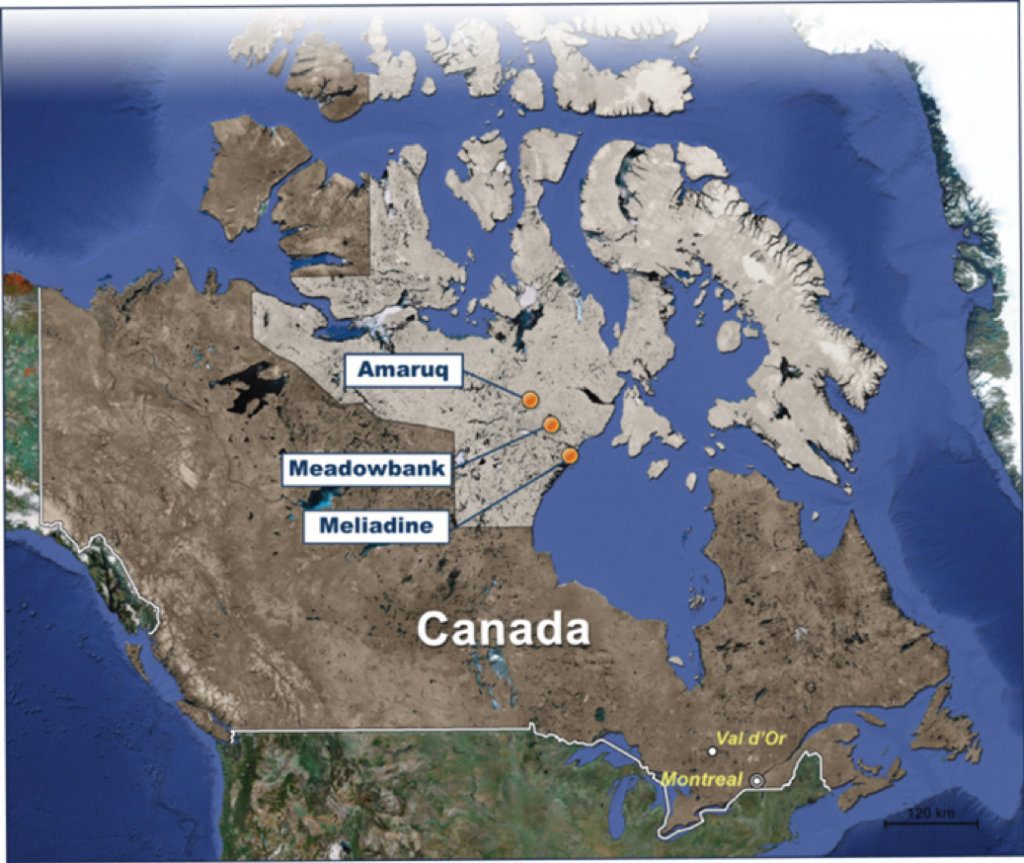Æquo in Nunavut

By François Meloche, Head of Corporate Engagement, Æquo


As a corporate engager, most of my time is spent at the computer or on the phone with company representatives to discuss their ESG management. On occasion, though, I get to travel on site to assess company practices first-hand. I was recently invited by Agnico Eagle Mines to visit its gold mine at Meadowbank in Nunavut and the neighbouring community of Baker Lake.
For three days, I had the opportunity to speak with staff and community members. The objective of the trip was to gain a better understanding of the company’s approach to social issues and identify best practices. One of the greatest challenges in the mining sector is mitigating environmental and social impacts while maximizing benefits for local communities. This is a business risk, as exemplified by several cases of mining projects in the past that have been postponed or abandoned due to local opposition (e.g. Manhattan Minerals in Peru, Gabriel Resources in Romania, Barrick Gold in Chile to name a few).

Agnico Eagle produces gold at the Meadowbank mine in Nunavut, an immense territory with a population of only 35,000. Production at the mine is expected to end by the end of this year but Whale Tail, a satellite deposit, is expected to be operating until 2026.
The mine is located approximately 70 km north of the town of Baker Lake. A first Inuit Impact and Benefits Agreement (IIBA) was signed between Agnico’s predecessor and the Kivalliq Inuit Association (KIA) in 2006, revised in 2011, and renegotiated in 2017. The KIA is the entity created by the Nunavut Agreement to manage Inuit-owned land. On the face of it, these agreements seem to indicate that the company has respected the free, prior and informed consent (FPIC) of the impacted indigenous peoples. However, FPIC is not so much a standard that can be checked off a list but rather a principle that should guide all interactions with host indigenous communities. With this in mind, I attempted to make the most out of my short stay in the community to gain a greater understanding of the company’s social practices and challenges.
Right from the start of my stay, I noticed that Agnico Eagle’s corporate culture emphasizes the importance of respecting the local community. The company facilitates exchanges between community members and non-Inuit employees, which likely contributes to mutual trust and the building of partnerships. Significant human and financial resources are dedicated to community relations as stipulated in the IIBAs. The company has implemented programs to promote local Inuit employment, training and suppliers. It has also invested in infrastructure for its activities that also benefit the community.
An issue that has been raised by hunters and trappers is the impact of the mine and associated roads on caribou herds. While the extent of this impact is debated, the company has put in place mitigation measures. One such measure is the closure of the access road to traffic when caribous are sighted in the area, which has stopped mining production several times last year.

I had the privilege to be in town during the annual Baker Lake Festival, of which Agnico Eagle was a key supporter. During the evening event attended by a large portion of the community, Dominique Girard, VP for Nunavut, announced four major community investments to mark to opening of the new Amaruq project: infrastructure for the local ambulance, a new search and rescue system, a donation to the local food bank, and a new sound and light system for the community center. Each announcement was greeted with cheers from the crowd. The evening went on with the Jerry Cans, a very popular Iqaluit-based band flown-in by the company and with the traditional square dance.
As I left this lively gathering, I pondered on how life would be in Baker Lake after the mine. Residents seem to have high expectations that benefits from the mine, jobs and local procurement will persist for years to come. Also, it struck me that investments in infrastructure should ultimately be assumed by the government and not a private entity with a relatively short-term presence. Baker Lake residents may be thinking of how they will transition to other sources of economic activity in 10 to 15 years when mining winds down. Some workers may be in a position to obtain jobs elsewhere through the experience and training they gained at the mine. While hunting, trapping and fishing are significant activities, they remain quite different from salaried employment at a mine, particularly in terms of monetary incomes.

Agnico Eagle should be commended for being open and transparent with shareholders such as the ones we represent. The company invited me for three days and allowed me to discuss different issues with staff and local community leaders. I am grateful to have had the opportunity to meet people from the North and have a closer look at their relation with a mining project.
